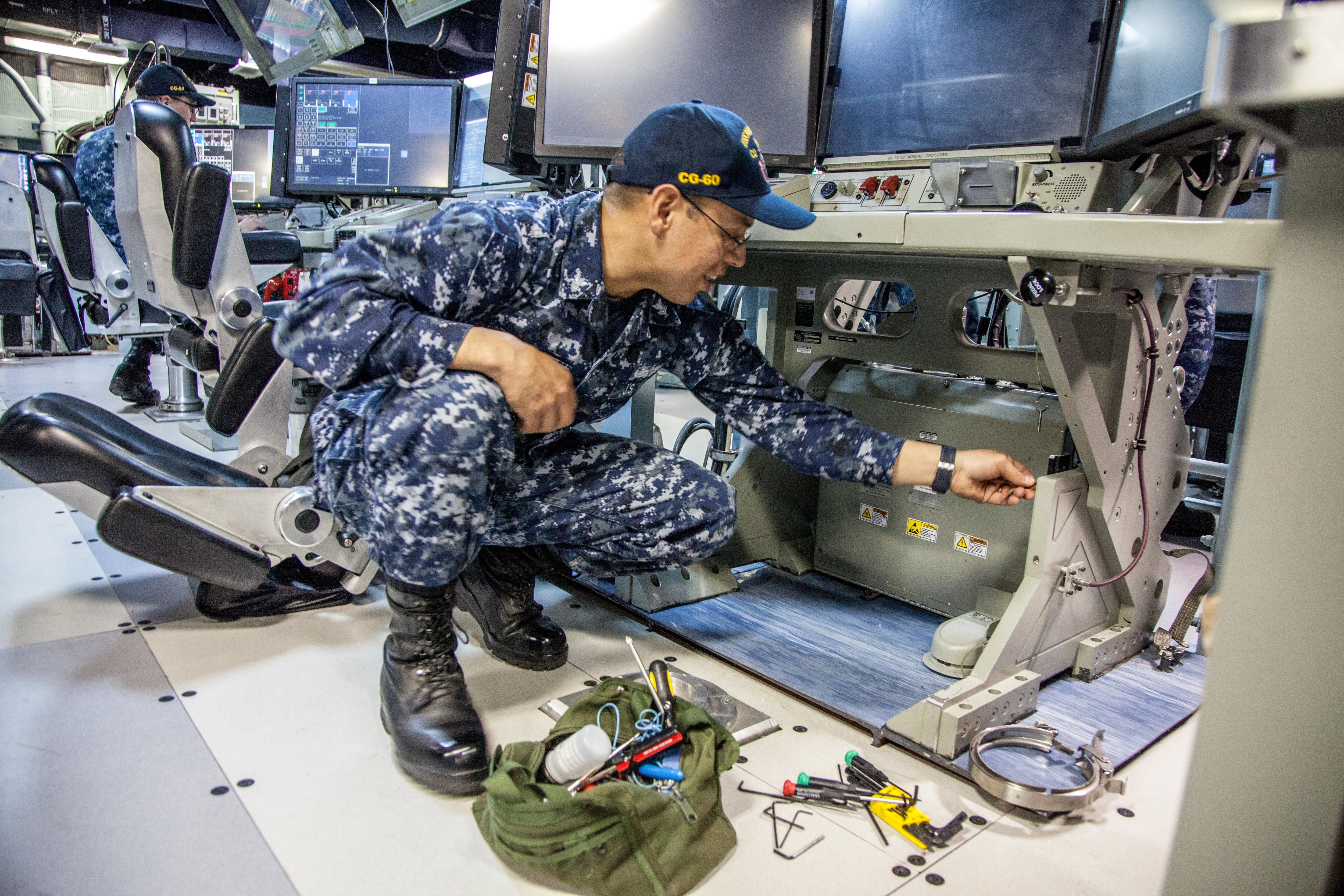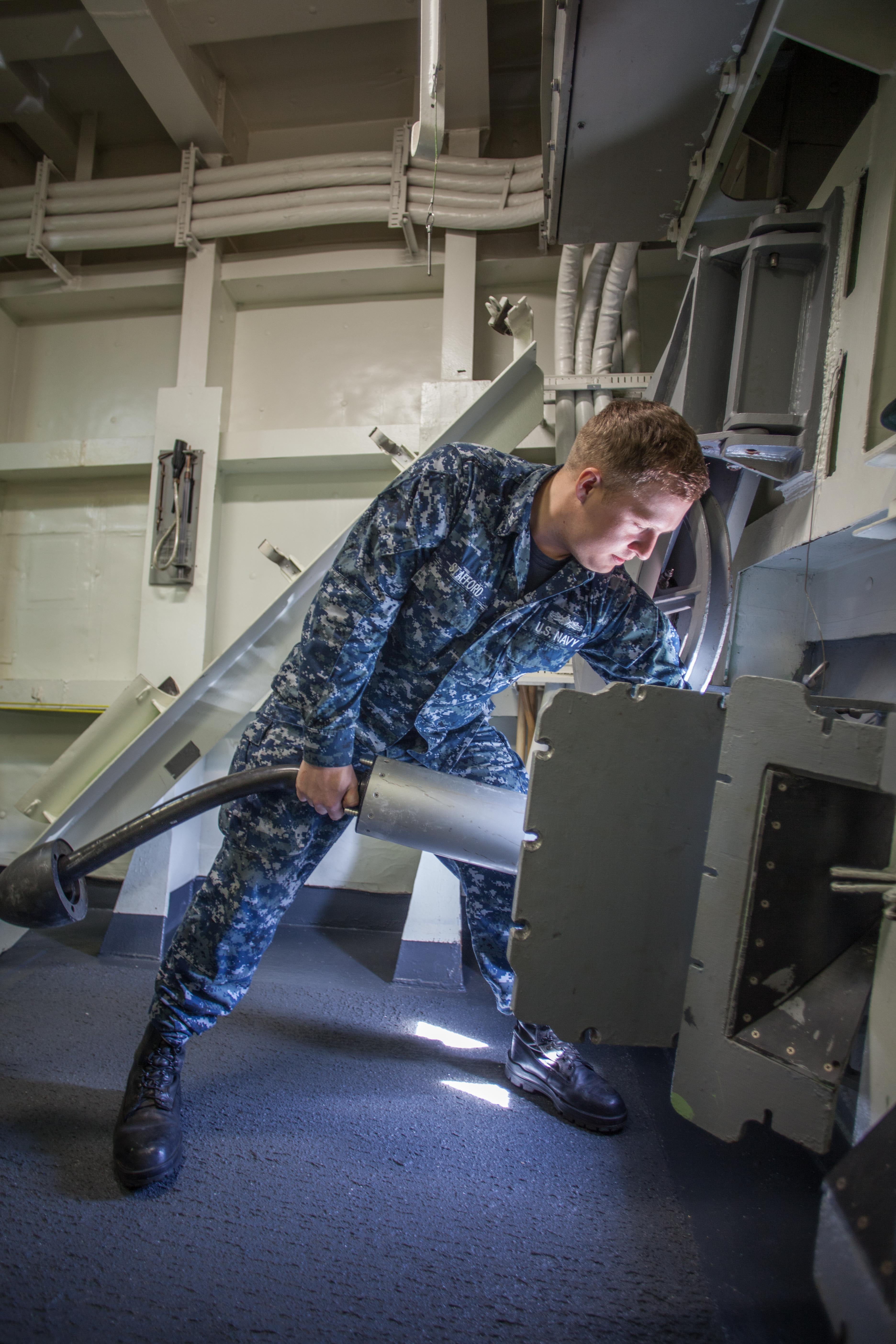NORFOLK, Va. — The Navy is setting in motion a plan that will transform the enlisted advancement system by allowing more commanders to directly promote thousands of additional sailors who are tapped as top performers.
The expansion of the "Meritorious Advancement Program," or MAP, will give more sailors a chance to skip the test, bypass Big Navy's traditional exam cycles and move immediately into the ranks of E-4 through E-6.
The new rules announced on April 3 also give commanders authority to waive the time-in-rate requirements for their best sailors, a fleet-wide change that could accelerate the path toward making the rank of chief petty officer.
The Navy has been expanding commanders’ authority to use MAP steadily for several years. In 2017 it will account for about 10 percent sailors who advance into those three eligible ranks. That’s almost double the 5 percent that were advanced that way in 2015. And for the first time this year, Navy reservists will be eligible for direct advancement.
"We’re continuing to increase those quotas in MAP," Master Chief Petty Officer of the Navy (SG/ID) Steven Giordano told sailors during an all hands call April 12 at Norfolk Naval Station.
"We’re going to increase to where about 25 percent of all advancements are going to be through the MAP program," Giordano said.
"This is a tremendous asset for our commanding officers and expanding this program is the way we want to go, based on how we see it being used by commands and the quality of the sailors they are selecting."
Navy officials say they won't push it up to 25 percent overnight, but plan a measured approach and will continue to refine the program as they increase quotas.
"We have to watch this carefully and ensure that we are maintaining balance in the enlisted force as we do this," Chief of Naval Operations Adm. John Richardson told Navy Times April 12.
"I like this program because it speaks to empowering our commanding officers because: Who better knows their sailors than those serving right there with them?"
"I'm excited about it," Richardson said.

Aboard the USS Normandy (April 12, 2017) Fire Controlman (Aegis) 2nd Class Jonathan Saldivar, a four-year Navy veteran was meritoriously advanced to second-class petty officer last year. Here, he's doing maintenance on his work station, the "Own Ship's Display Assistant" console in Normandy's combat information center.
Photo Credit: Mark D. Faram/Staff
But there are risks. The change is likely to raise concerns among the most traditional sailors who worry that advancing sailors without a test will result in some sailors with less knowledge and professional skills. Others worry that giving commanders and the chiefs’ mess more power over advancements will foster an old-boy network that prioritizes loyalty over merit.
"You have to be aware that someone is going to critically look at your picks. Someone in the crew will say 'Why did you pick that person and not me' and you have to have an answer for that," said Capt. Derek Trinque, commanding officer officer of the guided-missile cruiser Normandy.
"If you are going to go through a crew of 350 sailors and pick seven sailors who deserve this, then you are going to have reasons because you will have to have gone through a measured process by getting the right leaders together to pick the most deserving sailors."
For any sailors who might feel slighted by a MAP process that seems arbitrary, there will remain plenty of opportunity to study hard, ace the test and advance up through the traditional path, Navy officials say.
As the Navy allows commanders to issue more direct advancements via MAP, that will reduce the number of quotas available for the traditional fall testing cycle.
The effect may be to reduce the number of slots for sailors seeking promotion through the traditional exam cycle. Yet senior enlisted leaders downplay that, saying the same sailors will be advancing just though different channels. "These should come off the top … if you are doing this right," said one command senior enlisted sailor.
"Any sailor worth their salt wants that MAP quota — it’s the ultimate performance-based advancement," the senior enlisted sailor said.
"And frankly, as a leader, you want sailors who want to be that sailor, those who soak up all you can teach and ask for more — and perform at a high level all the time," he said.
MAP, REVAMPED
The latest expansion reinforces a big reversal for the Navy’s Meritorious Advancement Program, which limped along in limited use for 40 years as the Command Advancement Program, or CAP, and, until recently, was slated for the scrap heap of Navy personnel programs.
Many officials blamed CAP’s unchecked use for the overmanning problems in the enlisted force. Yet the program was revamped three years ago with new restrictions to address those manning concerns.
Meanwhile, as Navy leaders expanded the scope of the program, they also sought to change the way it was viewed inside Navy culture.
For years, MAP was viewed as an alternative path to advancement for hard-working sailors who couldn’t pass the test. But more recently, Navy leaders touted the program as a way to reward their best sailors, advance them ahead of the test and to give more control to the commanders who know their sailors the best.
For sailors, other added benefits of a direct promotion include the opportunity to assume the new rank and get the pay raise immediately — no frocking — and to start clocking time-in-grade toward the next promotion.
"We continue to refine and improve the program to further empower command triads to recognize their most highly talented sailors through immediate advancement," Burke wrote in NavAdmin message 079/17 released April 3rd detailing the this year’s as he unveiled this year’s MAP season details in.

Aboard the USS Normandy (April 12, 2017) Sonar Technician 3rd Class (Surface)(SW) Logan Stafford, a three-year Navy veteran was meritoriously advanced to third class petty officer last year. Here, he performs maintenance on one of two towed "fish" the ship used to detect submarines. Photo by Mark D. Faram
Photo Credit: Mark D. Faram/Staff
TIME-IN-GRADE WAIVERS
This year, the Navy is expanding the range of sailors eligible for MAP in multiple ways.
This year, for the first time, commanders can advance any sailor to the rank of E-4 or E-5 regardless of time in grade.
That’s a big change from the traditional rules that require E-3 sailors to have six months at that paygrade before being eligible to advance to E-4. It’s usually a full year for E-4 sailors seeking to move up to E-5. Yet under the MAP option, skippers now have the authority to simply waive that and advance whoever they believe is ready.
However, there are no across-the-board waivers for E-5s looking to move up to E-6. Most second-class petty officers will still have to wait the required three years until becoming eligible for advancing to E-6.
There is a limited exception: For sailors designated as an "early promote" on their evaluations, commanding officers can waive a year requirement, shorting the wait to two years.
QUOTAS
Individual unit commanders will be given a limited number of quotas for granting direct advancements.
About 40,000 sailors are advanced each year into the ranks of E-4, E-5 and E-6. The number of quotas for MAP has expanded significantly to about 4,200 in 2017, almost twice the roughly 2,300 in 2015.
At the same time, the Navy is offering those quotas to a broader array of commands. Quotas are divvied up by what the Navy calls Unit Identification Codes, or UICs. This year, MAP quotas will be issued to 2,798 UICs, up from 907 last year.
Commands must use or lose those quotas during a limited window of time. This year commanders will be tapping sailors to move up through MAP between July 1 through Aug. 31.
After that, unused quotas will then be tallied up by personnel officials and redistributed to CO’s who request them. CO’s will have until the end of September to advance sailors with re-used quotas.
For example, a commanding officer might not have enough qualified sailors at the E-5 level so they could offer up those quotas and instead request more at the E-4 or E-6 level. The swap isn’t guaranteed, but officials say they will work as hard as possible to grant the CO’s wishes.
SOME RESTRICTIONS
For years, a main criticism of the MAP option was that it undercut the Navy’s forcewide personnel planning efforts and could result in too many sailors getting promoted in specific ratings.
That’s why the new policy puts some restrictions on direct advancements for sailors in ratings that are identified as overmanned.
For those overmanned specialties, called restricted rates, commanding officers might still be able to grant direct advancements, but that will require additional approval. What happens in these cases is the CO submits a package up to their Echelon II or equivalent level commander who has the final say.
After weighing the command’s request and the community manager’s warnings, that high-level commander can give the go ahead to the command or deny the request and return the quota to the command. The CO can then advance someone in a non-restricted rate or turn the quota back in.
This year, seven active-duty rating and paygrade combinations fall into this category, down from 18 last year in the active component. In the reserve full-time support community, the numbers are higher, with 16 restricted rates. But even in the FTS world, the numbers have dropped from 33 last year.
SELECTED RESERVE
This year, for the first time since the program changed from CAP to MAP, the selected reserve will also participate.
"With end strength stabilizing and advancement opportunity improving, selected reservists in commissioned units will be able to participate in the Meritorious Advancement Program fiscal year 2017," said Cmdr. Doug Gabos, spokesman for Navy Reserve Forces Command
"Community Managers are finalizing the enlisted advancement plan for the Selected Reserve now. Once complete, the MAP quota plan will also be finalized, and details will be announced."
Gabos declined to speculate about what those numbers might be or when they might be made public, but said that the reserve program would use the same timeline and rules as the active force.
Mark D. Faram is a former reporter for Navy Times. He was a senior writer covering personnel, cultural and historical issues. A nine-year active duty Navy veteran, Faram served from 1978 to 1987 as a Navy Diver and photographer.




